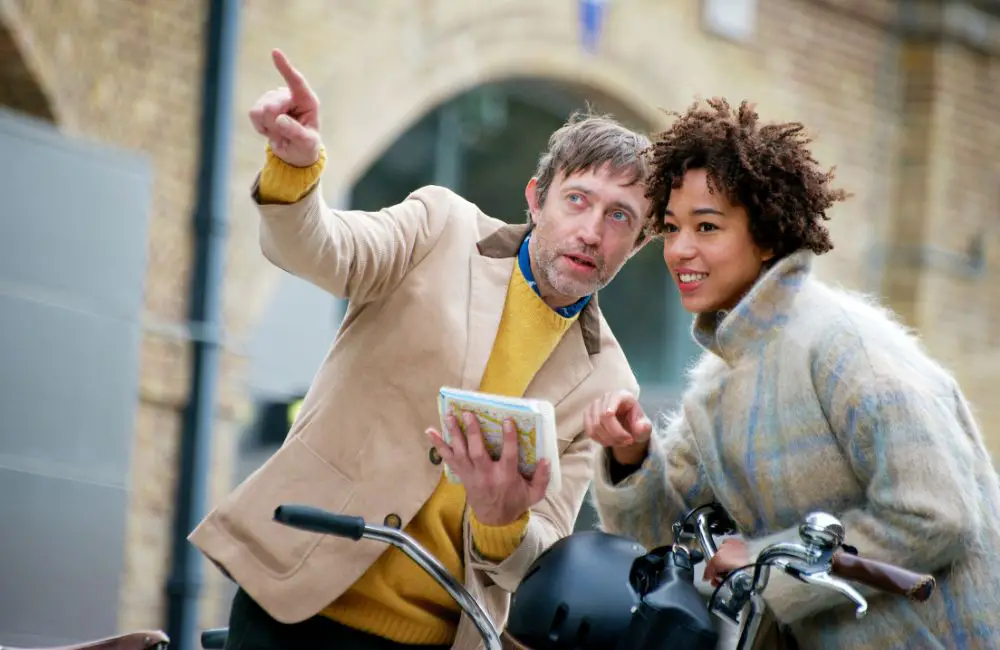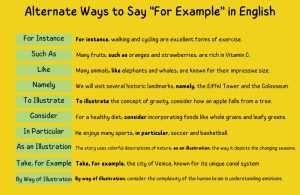Knowing how to ask for directions is crucial when you are in a new place or trying to find your way around. It can help you get to your destination faster and avoid getting lost. However, many ESl speakers or learners may find asking for directions in English quite challenging. No worries! In this post, I’ll help you learn how to ask for directions in English.
To ask for directions in English, start politely with “Excuse me” or “Pardon me,” then use phrases like “How can I get to the hospital?” or “Can you tell me the way to the railway station?” Listen carefully, clarify directions if needed, and thank the person with “Thank you” or “I appreciate your help.”
Are you looking for a book or a guide to help you learn and improve your English? You may try English Made Easy Volume One: A New ESL Approach: Learning English Through Pictures (Amazon Link).
Now let’s learn how to ask for directions in English in more detail. Keep reading to get tips and English expressions.
Table of Contents
- Start the Conversation Politely
- Common English Expressions to Ask for Directions
- English Expressions for Confirming and Clarifying Directions
- Tips to Ask for Directions the Right Way
- Useful Vocabulary for Understanding Directions
- A Sample Conversation on Asking for Direction
- In Conclusion
- 10 Frequently Asked Questions Related to Asking for Directions to a Place in English
Start the Conversation Politely
When asking for directions, how you phrase your request can significantly affect the response you receive. Using polite expressions shows respect and consideration for the person you’re asking, which makes them more likely to assist you.
It’s essential to use a friendly tone and smile if possible. This helps create a positive interaction and increases your chances of receiving help. Here are some examples of polite and impolite expressions. Make sure you understand the difference and act accordingly.
Polite expressions: Examples
- Excuse me, could you help me? I’m looking for the nearest grocery store.
- Pardon me, do you have a moment? I need some assistance finding the library.
- Hi, I’m sorry to bother you, but could you please point me in the direction of the train station?
Impolite expressions: Examples
- Hey, where’s the grocery store?
- You, tell me where the library is.
- I need to get to the train station, which way is it?
Here are some tips to follow so that you can ensure politeness on your part while asking for directions in English.
- Start with a polite phrase such as “Excuse me” or “Pardon me” to get the person’s attention.
- Apologize for interrupting or bothering them with phrases like “I’m sorry to bother you” or “I hope I’m not interrupting.”
- Use “please” and “thank you” to show appreciation for their time and assistance.
- Be patient and listen carefully to the directions given.
- If you don’t understand the directions, kindly ask for clarification instead of showing frustration or impatience.
Common English Expressions to Ask for Directions
Once you have started the conversation politely, you can ask for directions using simple phrases. Remember, it’s essential to maintain a polite tone and use respectful phrases when asking for directions.
Here are some English expressions to ask for directions. Combining these expressions with a friendly attitude will increase your chances of receiving helpful directions from the person you’re asking for directions.
- How can I get to the library?
- Can you tell me the way to the cafeteria?
- What’s the best way to reach Donald Street?
- Where is the school located?
- Could you please direct me to the nearby hospital?
- Is there a shortcut to get to the zoo?
- I’m trying to find a place, can you help me?
- What’s the quickest route to 1st Avenue?
- Can you give me directions to his house?
- I’m lost and trying to get to the park. Can you guide me?
- How far is the cafe from here?
- Can you show me on this map where the admin building is?
- Are there any landmarks near road number 17 that I should look for?
- Which street should I take to get to the bus stop?
- Do I need to take public transportation to get there?
- How many blocks away is the apartment?
- Is it possible to walk to the metro station from here?
- What’s the easiest way to navigate to the railway station?
English Expressions for Confirming and Clarifying Directions
When receiving directions, it’s crucial to ensure that you have understood them accurately to avoid getting lost or taking a longer route. To confirm and clarify the directions, you can reiterate what the person has said, ask them to repeat certain details, or seek further clarification.
This demonstrates that you have been listening carefully and provides an opportunity to correct any misunderstandings. Here are some English expressions to help you confirm and clarify directions.
- So, I should go to the library and then turn left, right?
- Did you say I need to turn left at the central park?
- Let me make sure I understood correctly; I should turn left, is that right?
- Just to clarify, should I be on the lookout for the twin tower before turning right?
- To be certain, is it right at the museum?
- Can you please elaborate on how to get from Uttara to Dhanmondi?
- Is there any chance you could provide step-by-step directions?
- Would it be possible for you to write down the directions for me?
- How many minutes will it take to reach the campus from here?
- Can you tell me which bus route I should take to get there?
- Are there any alternative routes in case I miss a turn or get confused?
- Could you please be more specific about the landmarks I should look for?
Tips to Ask for Directions the Right Way
When asking for directions, it’s essential to approach the situation tactfully and respectfully to make the experience pleasant and productive for both parties. Following certain guidelines can ensure that you get the help you need while maintaining a courteous and polite demeanor. Here are some tips to ask for directions the right way.
#1 Be polite
Politeness goes a long way in creating a positive interaction with others. Use respectful phrases like “excuse me” or “pardon me” when initiating the conversation, and always end with a “thank you” or “I appreciate your help” to show gratitude for the assistance provided. Demonstrating respect and appreciation can increase the likelihood of receiving helpful directions and foster a sense of goodwill.
#2 Speak clearly
When asking for directions, enunciate your words clearly and maintain a steady pace in your speech. This helps ensure that the person you’re asking can understand your question and provide accurate directions. Also, try to maintain a neutral accent and avoid using slang or colloquial expressions that may be unfamiliar to the person you’re asking.
#3 Listen carefully
Paying close attention to the directions given is crucial to ensure that you don’t get lost or take a longer route. Focus on the person’s words and try to visualize the route in your mind. Don’t hesitate to ask for clarification or repetition if you’re uncertain about any part of the directions. This shows that you value their input and are genuinely interested in understanding the directions correctly.
Useful Vocabulary for Understanding Directions
To help you understand the directions given, it is essential to know some common vocabulary related to directions. Here are some useful words:
- Left: The opposite direction of right.
- Right: The opposite direction of the left.
- Straight: Moving forward without turning.
- Block: A city block, usually the distance between two streets.
- Corner: The point where two streets meet.
- Traffic light: The device at an intersection that controls traffic with red, yellow, and green lights.
- Crosswalk: A designated area for pedestrians to cross a street.
- Turn: Change direction by moving to the left or right.
- Roundabout: A circular intersection where traffic moves in one direction around a central island.
A Sample Conversation on Asking for Direction
In this polite conversation between two strangers, Ms. Sara respectfully seeks directions from Mr. Regan to the nearest shopping mall.
Ms. Sara: Excuse me, sir, could you please help me?
Mr. Regan: Of course! What do you need assistance with?
Ms. Sara: I’m trying to find the nearest shopping mall. Would you happen to know the way?
Mr. Regan: Yes, I do. You’ll want to continue straight down this street for about three blocks, then take a left at the traffic light. The shopping mall will be on your right after two more blocks.
Ms. Sara: So, I should go straight for three blocks, turn left at the traffic light, and then the mall will be on my right after two more blocks. Is that correct?
Mr. Regan: Yes, that’s right! You’ll find the entrance to the mall just past the coffee shop on your right.
Ms. Sara: Thank you so much for your help! I really appreciate it.
Mr. Regan: You’re welcome! I’m glad I could help. Have a great time at the mall!
Ms. Sara: Thanks. Have a great day!
In Conclusion
Alright! After learning the right English expressions, you can confidently ask for and understand directions. Remember to start the conversation politely, ask for specific directions if needed, and thank the person for their help.
I hope, using these tips, you can easily navigate your way around any English-speaking environment.
10 Frequently Asked Questions Related to Asking for Directions to a Place in English
1. What’s a polite way to start asking for directions?
Starting with “Excuse me” or “Pardon me” is a polite way to get someone’s attention.
2. How can I ask for the quickest route to a place?
You can ask, “What’s the fastest way to get to…?” or “Is there a shortcut to…?”
3. How can I clarify if I didn’t understand the directions?
You can say, “Could you repeat that, please?” or “I’m sorry, I didn’t catch that. Could you explain again?”
4. How do I ask for landmarks to help find a place?
“Are there any landmarks I should look out for?” or “Is there something noticeable near it?”
5. How can I ask about public transport options?
“Is there a bus or train that goes there?” or “Which subway line should I take?”
6. How do I ask for directions to a specific type of place, like a restaurant?
“Can you direct me to a good restaurant nearby?” or “I’m looking for a pharmacy. Is there one close by?”
7. How can I inquire about the distance to a place?
“How far is it from here?” or “Is it a long walk?”
8. How can I ask if a place is easy to find?
“Is it easy to spot?” or “Is it well-signposted?”
9. How do I ask for written directions?
“Could you jot down the directions for me?” or “Can you write that down, please?”
10. How can I thank someone for giving directions?
“Thank you so much for your help!” or “I appreciate your guidance!”





